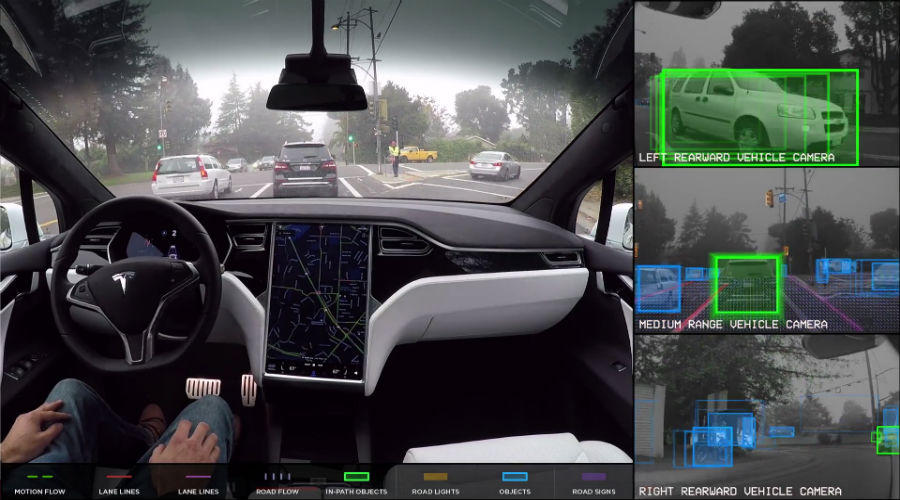Tesla admitted this week that it failed on its promise to complete a coast-to-coast autonomous drive in 2017. “I obviously missed the mark with this one,” CEO Elon Musk said during the company’s earnings call.
Musk said Tesla was too busy trying to correct Model 3 “production hell” to focus on the initiative. However, he said the drive is possible using the company’s existing technology, with a bit of a code cheat.
“We could have done the coast-to-coast drive, but it would have required too much specialized code to effectively game it or make it somewhat brittle and that it would work for one particular route, but not the general solution,” Musk said. “So I think we would be able to repeat it, but if it’s just not any other route, which is not really a true solution.”
Musk said in 2016 that an update to Tesla’s self-driving system – Autopilot 2.0 – would make capable a complete trip from Los Angeles to New York without any human interference. The company planned to prove it by the end of 2017.
Musk hinted that the company may actually attempt the drive in three to six months. Further, customers who purchased the Full Self-Driving (FSD) upgrade for their vehicles will receive the update used for the cross-country drive, he said, though he did not offer a timeline for customer access to the feature.
During the call, Musk also held steady in his position that LiDAR – the tech used by most of Tesla’s rivals – is not the best approach to achieve fully autonomous driving. Tesla, instead uses redundant forward cameras, forward radar, and near-field ultrasonics. Musk believes that radar equipment is the best path to FSD.
Below are Musk’s comments from the call on the technology approach:
I think it’s pretty obvious that the road system is geared towards passive optical. We have to solve passive optical image recognition, extremely well in order to be able to drive in any given environment and the changing environment. We must solve passive optical image recognition. We must solve it extremely well.
At the point at which you have solved it extremely well, what is the point in having active optical, meaning lidar, which does not – which cannot read signs; it’s just giving you – in my view, it is a crutch that will drive companies to a local maximum that they will find very difficult to get out of.
If you take the hard path of a sophisticated neural net that’s capable of advanced image recognition, then I think you achieve the goal maximum. And you combine that with increasingly sophisticated radar and if you’re going to pick active proton generator, doing so in 400 nanometer to 700 nanometer wavelength is pretty silly, since you’re getting that passively.
You would want to do active photon generation in the radar frequencies of approximately around 4 millimeters because that is occlusion penetrating. And you can essentially see through snow, rain, dust, fog, anything. So, it’s just I find it quite puzzling that companies would choose to do an active proton system in the wrong wavelength. They’re going to have a whole bunch of expensive equipment, most of which makes the car expensive, ugly and unnecessary. And I think they will find themselves at a competitive disadvantage.
Now perhaps I am wrong. In which case, I’ll look like a fool. But I am quite certain that I am not.
In general, Musk was positive about Tesla’s progress toward full-self-driving:
I am pretty excited about how much progress we’re making on the neural net front. And it’s a little – it’s also one of those things that’s kind of exponential where the progress doesn’t seem – it doesn’t seem like much progress, it doesn’t seem like much progress, and suddenly wow. That’s been my observation generally with AI stuff.
And you look at say something like what Google DeepMind did with AlphaGo. It went from not being able to beat even a pretty good Go player to something that could beat the European champion, then it could beat the world champion, then it could thrash the world champion, then it could thrash everyone simultaneously. Then they made AlphaZero, which could thrash AlphaGo, and where it’s just learning against itself, was better than all the world’s human experts.
It’s going to kind of be like that for self-driving. It will feel like well this is a lame driver, lame driver. Like okay, that’s a pretty good driver. Like holy cow, this driver’s good. It’ll be like that. I mean, timing-wise, I think we could probably do a coast-to-coast drive in three months, six months at the outside.
At this point, many watchers of Tesla’s self-driving program take Musk’s claims with a grain of salt. They’re ready for the company to back up its claims, particularly those customers who paid thousands upfront fro the FSD option. I will be interesting to see if FSD gets a debut in the next six months.
